Last Friday, feeling a need to indulge my wanderlust and see some fall foliage, I headed west to Chippokes Plantation State Park. When this blog visited Chippokes before, I mentioned that it is one of my favorite places to get away to, and fortunately it is a only a pleasant hour's journey from home. However, when I got there they were having day 1 of their Plantation Christmas Festival, and the center of the park was crowded with vendor tents and shoppers. Apparently it is quite a big deal as there were people selling their handmade wares from all over the country. I know many people enjoy this sort of thing, but for me they are little corners of hell. I told the costumed gate attendants that I was there to hike, not for the festival, so they waved me through the gates and crowds at no charge, to a preferred parking spot behind the mansion. It made me feel very special.
Since most of the activity (and fortunately the crowds too) was centered around the mansion, I did not go into the gardens, but they are not why I visit Chippokes. However, on the edge of the gardens I noticed some Camellias blooming, mainly C. sasanqua and C. sinensis which are in season right now, but I also noticed this C. japonica which was several months early to be this showy.
Camellias are not the only thing under cultivation at Chippokes. Part of the mission of Chippokes is to maintain the nearly 400-year-old farm, so they keep the fields planted in a variety of crops as well as manage a heard of cattle.
Glycine max (Soybean)
Growing along the edge of the soybean field was this pretty little plant, often listed as a weed. It is a species of Polygonum, possibly P. caespitosum, and I want to thank Phillip of How it Grows for helping with the I.D.
My first destination was Lower Chippokes Creek, and when I got there I noticed how high the tide was. I knew we were having a mild Nor'easter and that the water was backing up in the rivers closer to the ocean, but I hadn't considered that the storm's reach would be this far inland.
My next destination was the beach along the James River, and in order to get there I travelled along the edge of the fields next to the old forest. Here were many natives putting on their final show of color before winter's temporary shut down.
Callicarpa americana (Beautyberry)
Aralia spinosa (Devil's Walking Stick)
Celastrus scandens (American Bittersweet)
Rhus copallinum (Winged Sumac) - Thanks for the correction Phillip
Liquidambar styraciflua (Sweetgum) foliage with the trunks of Platanus occidentalis (American Sycamore)
Toxicodendron radicans (Poison Ivy)
Before I got to the beach I was worried that the higher tide would make the way impassable to my favorite grove of Bald Cypress (Taxodium distichum), but it was mostly clear with only a few places where the boots had to be removed.
I don't know where the rest of you were Friday morning, but anytime I'm on this beach, I feel like the only person on the planet.
While on this beach last June, I found a string of black pearls clinging to a stump. This time the beach gods left me a string of black stars on an Eastern Red Cedar (Juniperus virginiana).
Other treasures were found, including this Monarch dying among the state fossil of Virginia, Chesapecten jeffersonius. This extinct scallop lived in a shallow warm sea that covered this area 4-5 million years ago.
I'll end with a gratuitous shot of my travelling companions for the day. Both dogs will not swim on their own, but Loretta likes to wade and lay down in the water. Penny was more comfortable using her bear like claws to walk on the tree trunk, but since they were tethered together, Loretta ended up pulling Penny into the water where she did not drown, nor melt.
If you are interested you can see the rest of the day's pictures here.
November 1, 2009
Subscribe to:
Post Comments (Atom)
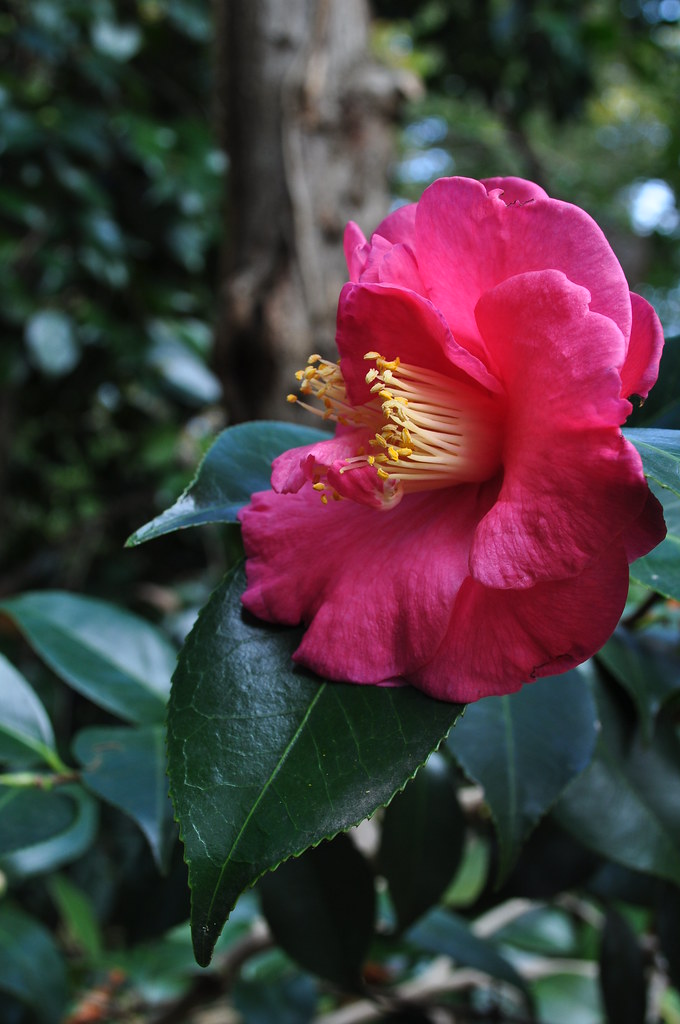
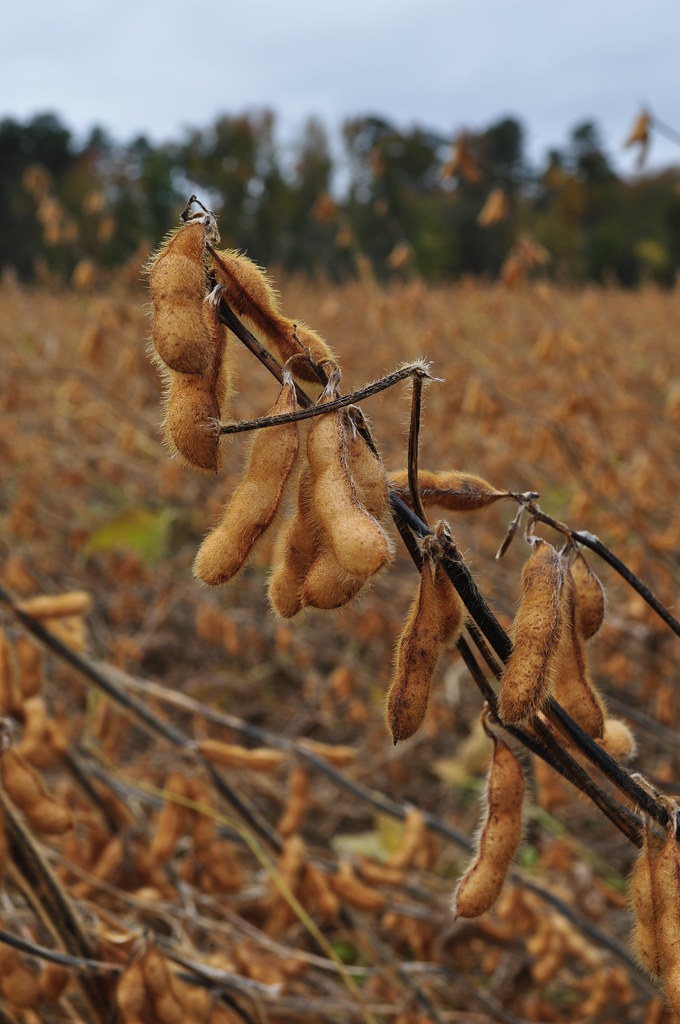
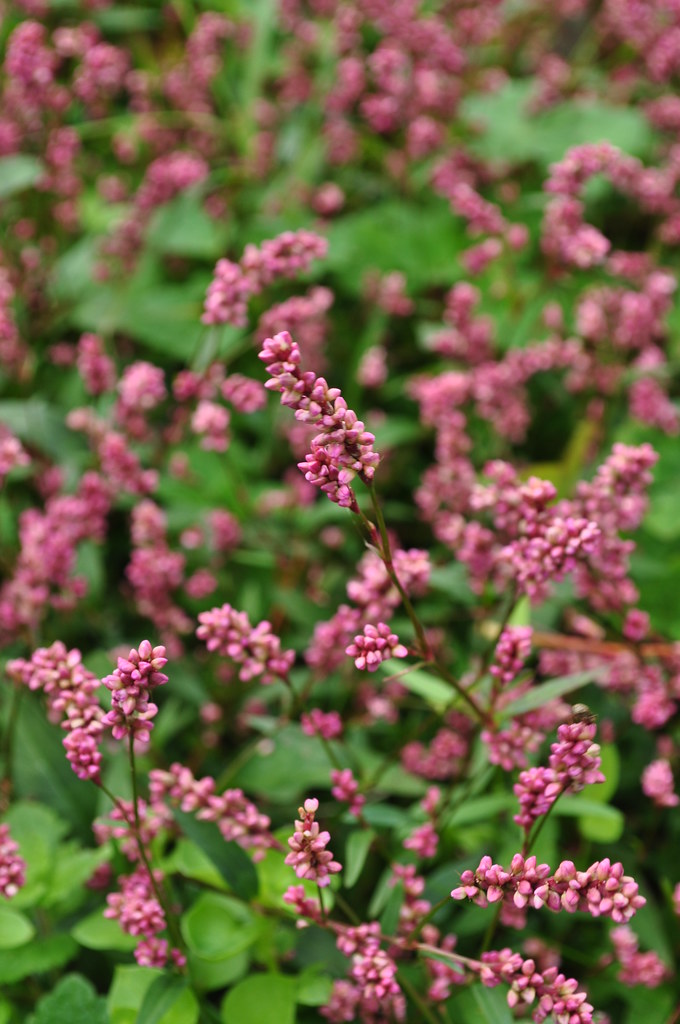
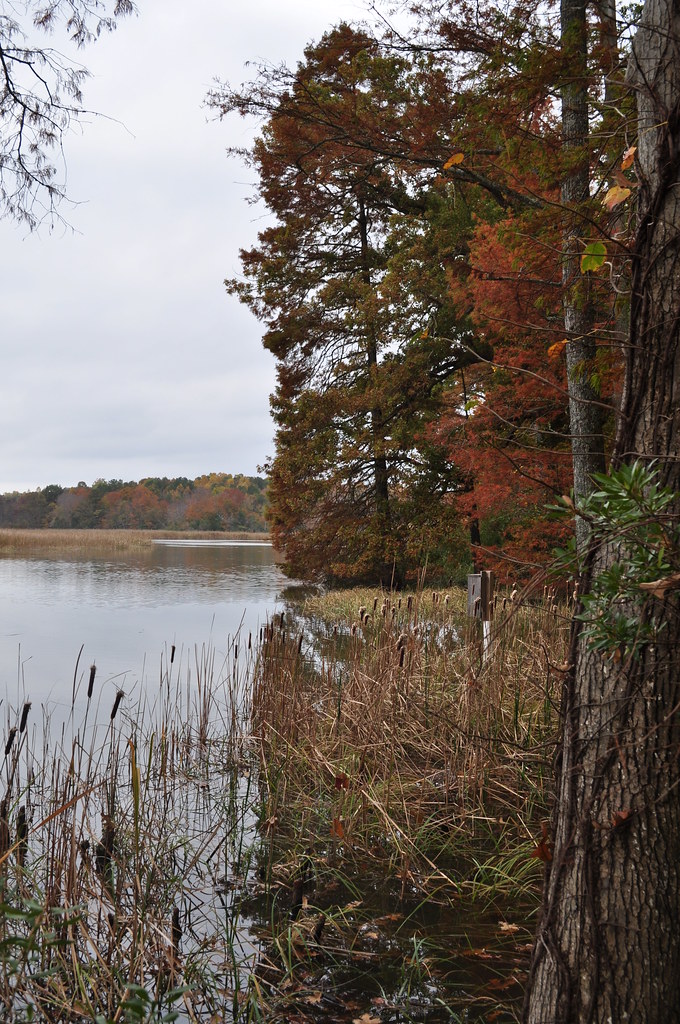


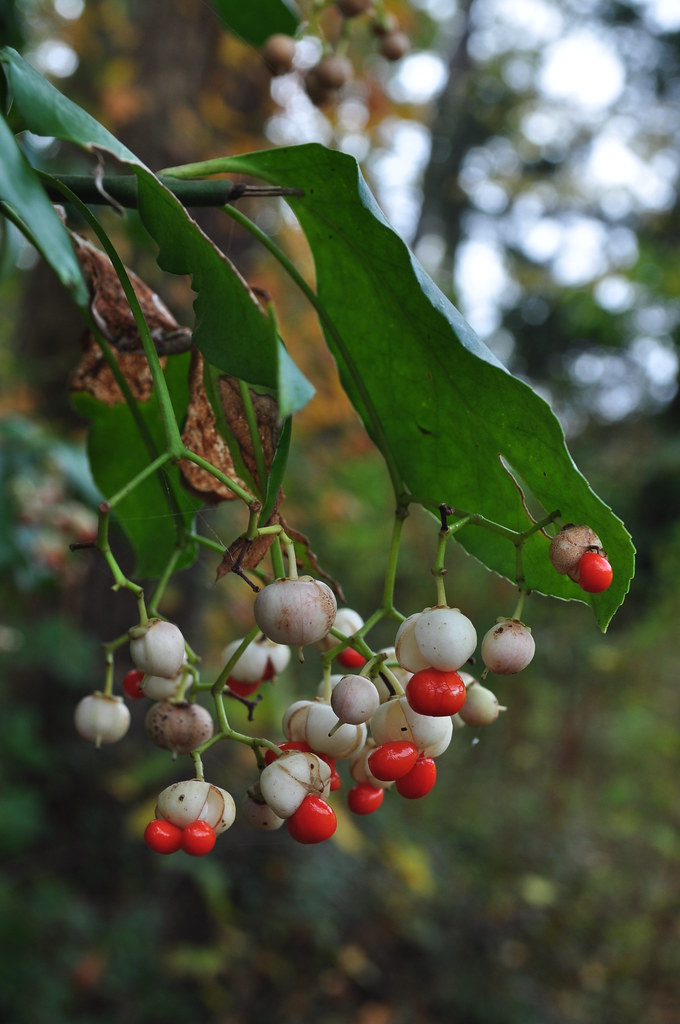
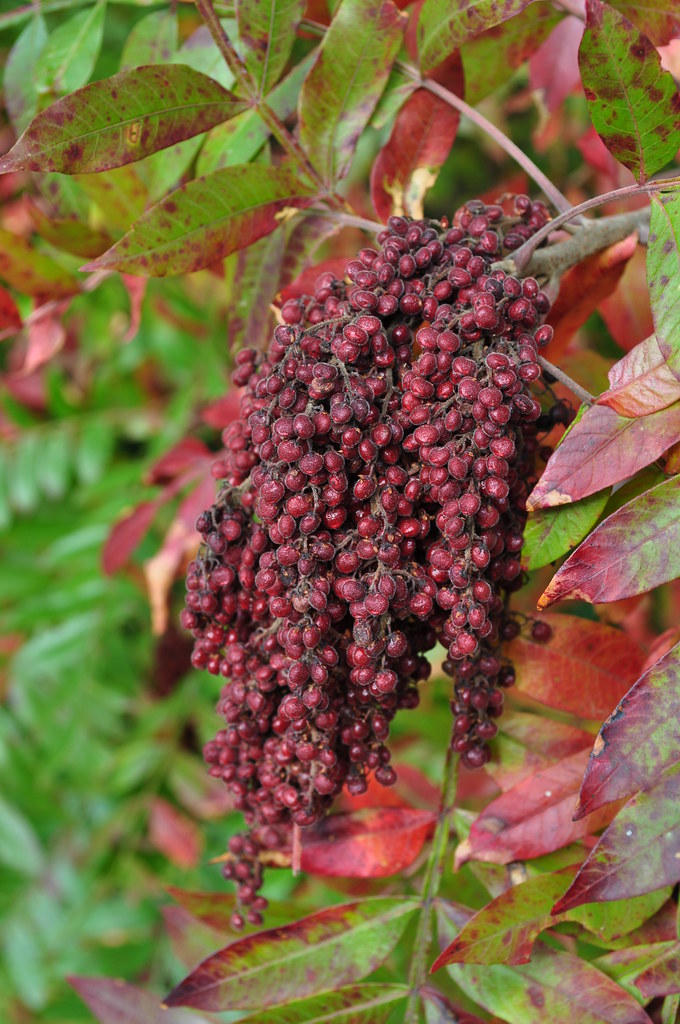
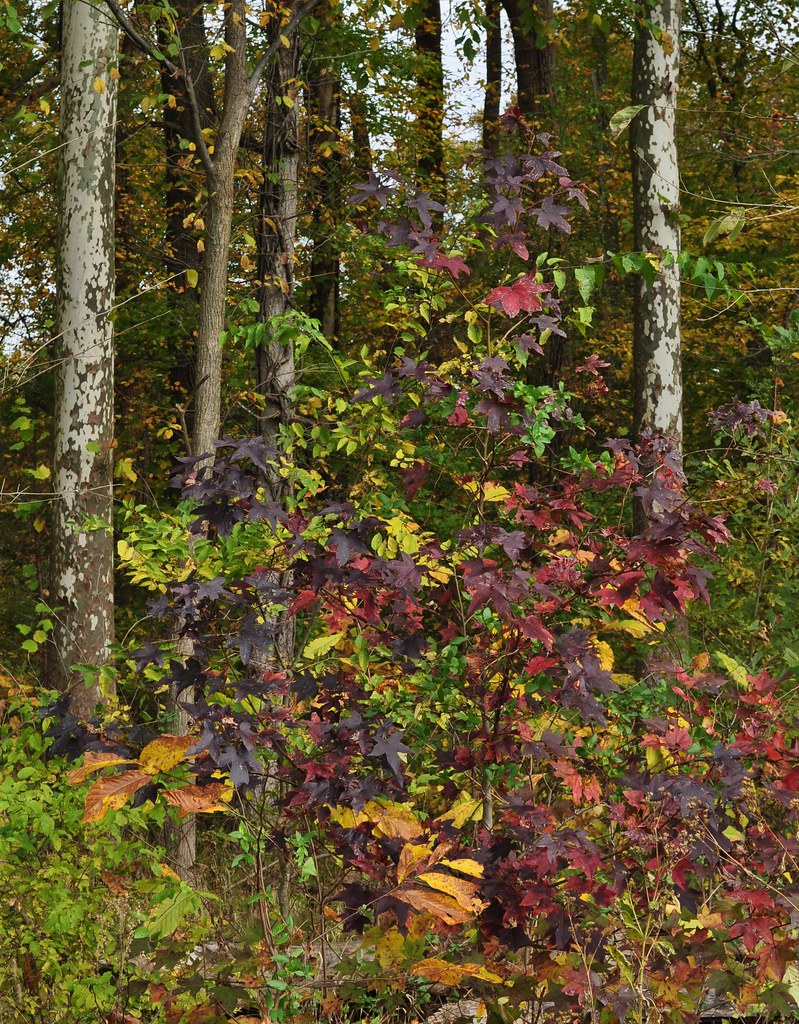
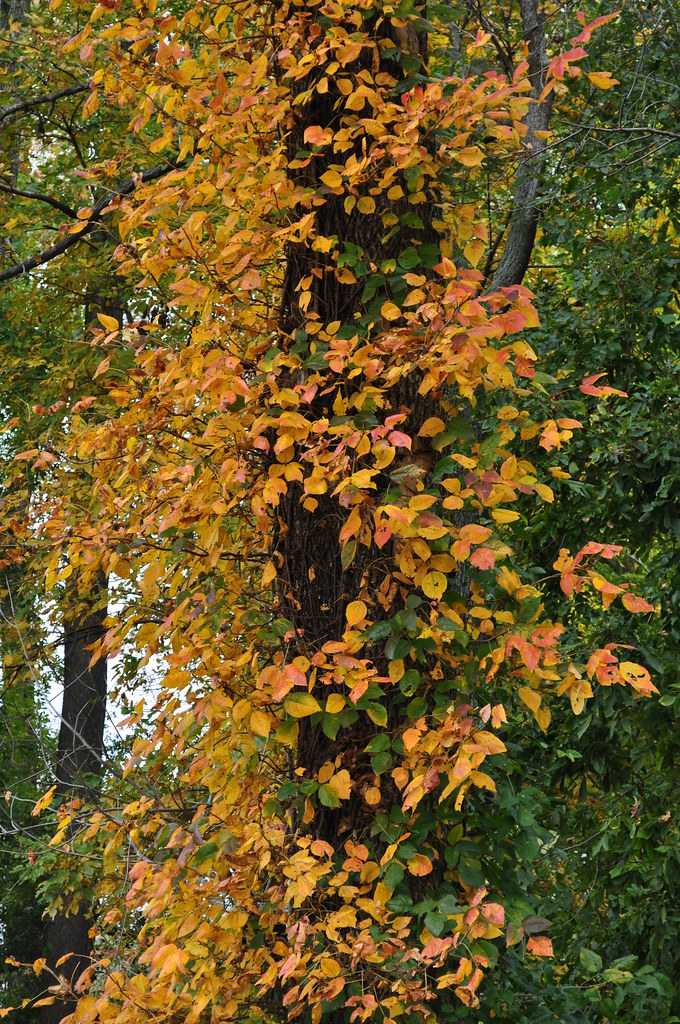

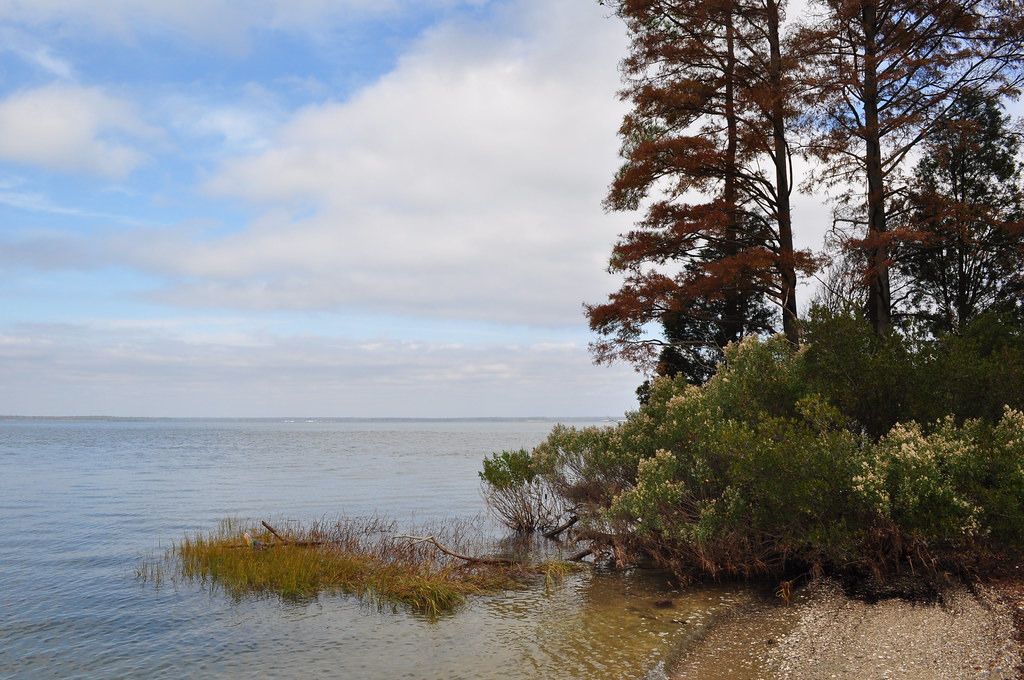
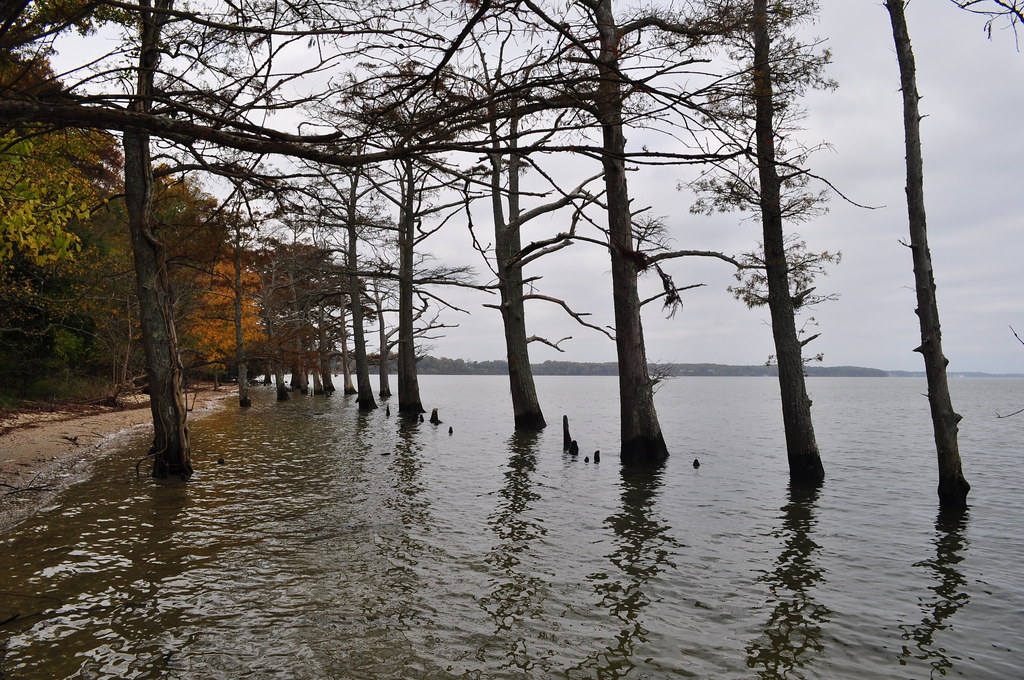

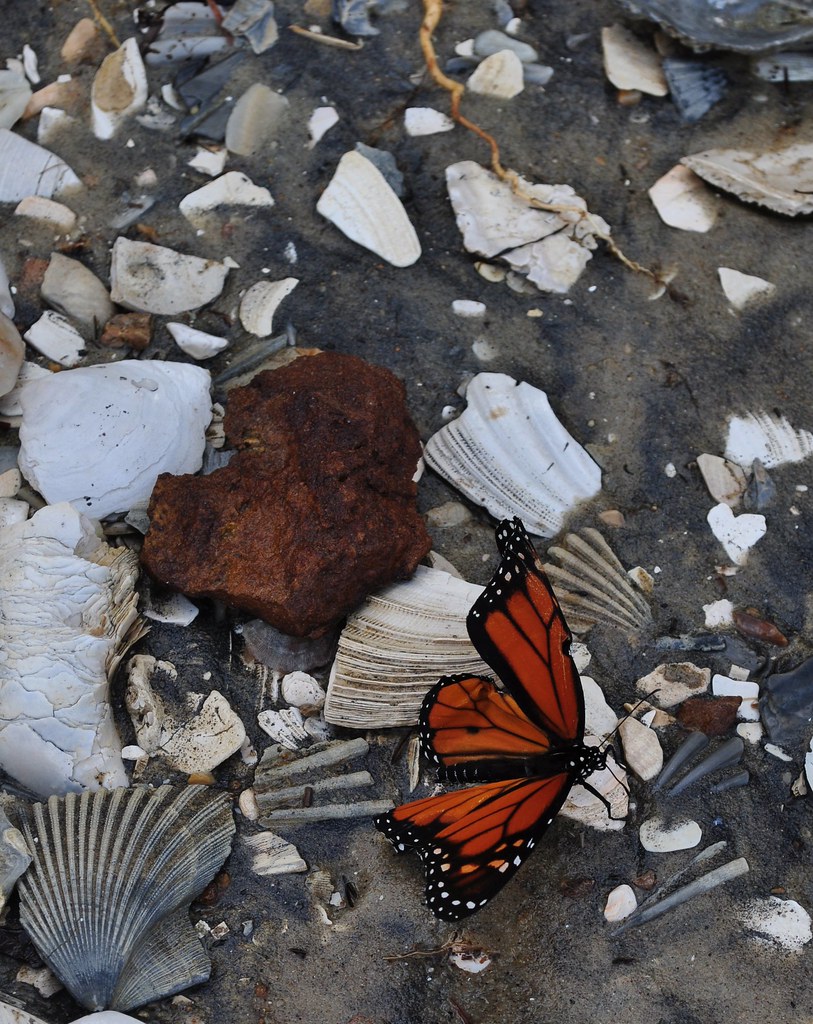
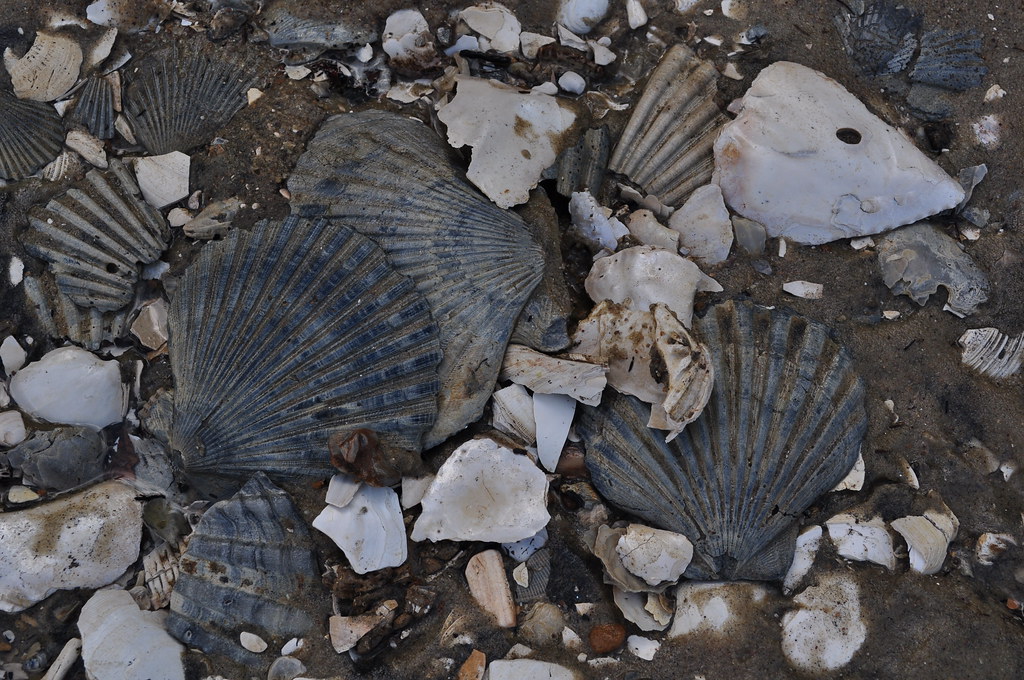





We seem to share a lot of favorite places, Les. Wonderful photos. This was a regular destination for Sunday afternoon picnics when I was a child - long before the plantation became a state park. I will look for you on the trails next time I visit. I will be the only other photographer taking pictures of poison ivy!
ReplyDeleteGood morning Les, so glad you were able to avoid that little corner of hell and skirt the main grounds of the plantation. I could have told you about the high tides...like today again. Great photos, I am not familiar with the Celastrus scandens. As for the Polygonum-- I could have shared lots with you. The deck garden was thick with it. When in flower it is pretty, but it is very aggressive....rooting at each node that touches the ground.
ReplyDeleteGlad you had such a nice time walking the beach with the dogs.
btw- will check on the Hampton cemetery. I thought it was a Veteran's cemetery, but THE Veteran's cemetery is on HU campus.
Chippokes is a beautiful place. The fruits are gorgeous. Poison ivy was one of the stellar plants for fall color here too. I was interested to see that you have hounds, not many people have them as pets.
ReplyDeleteThis is a fantastic post. We share many of the same plants. It's a pleasure seeing them through your eyes.
ReplyDeleteI hope you won't mind if I link to a last year's post of yours showing Baccharis for my upcoming post on that plant.
Michael,
ReplyDeleteI wish I had known about Chippokes earlier. A friend took me there about 15 years ago and it was love at first sight. You be careful in that Poison Ivy.
Janet,
When I found that my unknown plant was a Polygonum, I knew it had weed status. The dogs had a great time too, it was Penny's first "nature" hike with me, and except for the 20 something ticks I pulled off of her, she did well.
Sweet Bay,
We have three hounds as pets, but Patsy could not make it. Her 14 year-old mind was willing, but the body unable. The dog before her was a hound as was the one before him. I am a hound person.
Nell Jean,
I would be happy for you to link my previous post. I love Baccharis and wish it was more available for people to put in their yards.
Les
The last time I was at Chippokes it happened to be the pork, pine, and peanut festival. By the way, your sumac is winged sumac not staghorn. Staghorn grows in the western part of the state and looks a bit different. Great photos!
ReplyDeleteHow nice that they let you bypass the crowds, Les. You are indeed special. The beach is like something out of a book or movie, total isolation. I can see why you love it so. Thanks for the ID on the little polygonum/persicaria. We have it here and I love it, always wondered about its name. Thanks for taking us along on your hike.
ReplyDeleteFrances
I do enjoy homemade goods sold at stands though. :-)
Thanks for taking us along on your venture Les. Looks like you & furry friends had a good outing. :)
ReplyDeleteThough I lived in northern Florida for many years near the coast, I've never seen trees growing so close to the beach! Beautiful walk.
ReplyDeleteLes, I so enjoyed your hike. Many of the plants you profiled with your beautiful photos also grow wild here in Oklahoma. I'm sorry about my disparagement of the Eastern redcedar which has become invasive in Oklahoma. It probably stays wet enough where you are that it doesn't get out of hand. It is pretty in the winter against all the brown landscape. Happy fall.~~Dee
ReplyDeleteAbsolutely beautiful photos as always. Thank you.
ReplyDeleteLes, it seems I have given you an Honest Scrap Award on my blog. Would love to have you participate, but should you chose not, that too is okay. James did it to me, so I had to pay it forward. ;)
I love Loretta and Penny! The Pointer Sisters think that between the four of them - and a big open field - that the sky's the limit. I'm guessing they're right.
ReplyDeleteYou showed all of my favorites there - the sumac and bittersweet. What a beautiful time of year.
Phillip,
ReplyDeleteThanks for the correction, I have updated the post. I guess I spent all of my research grant trying to get the name of the Polygonum and the not shown Paulownia.
Frances,
I did not mean to disparage anyone who enjoys such festivals, I think it is great they exist. I guess I was flashing back to all those times I played the role of dutiful son/boyfriend/companion/husband at such events where I would see everything I needed to in 20 minutes and then wait for all others to finish.
Racquel,
You are welcome. All of us, furry and otherwise had a great time.
Granny J.,
Those bald cypress don't mind wet feet, besides the water is brackish and usually very calm.
Dee,
I guess Eastern Red Cedar gets along here with its neighbors because they all evolved together under the same circumstances and are used to cohabitation. But like I tell my customers, any plant can be a weed somewhere.
Di,
Thank you for the invite, I will look into it.
Pam,
It could be a girl's day out. Maybe we could find them some lesser mammals to chase and torment. Penny could certainly use the workout, and the other dogs and the humans in her pack would enjoy her exhaustion.
Les
Stunning photography Les, you really captured the camellia to perfection. The devil's walking stick brings back memories of my childhood. I recall seeing that growing in the woods around our property. Never thought poison ivy could look so pretty, I am highly allergic to the stuff.
ReplyDeleteYou always visit the most interesting places (which I've rarely heard of) and then share them with such beautiful images. Loved learning about something else named after Jefferson. There is a monster Sweetgum tree right outside the visitors' center at the UW Arboretum. When they built the new center, saving that specimen tree was a priority. I was there last week and it was in its full fall red glory — what a stunner! And I'm with you; I think this year's strange weather has resulted in spectacular fall tree color.
ReplyDeleteExcept for the poison Ivy, I liked this little tour. Even the string of beads on the tree was enchanting. I came over here to your blog, Via Di, voice in the garden.
ReplyDeleteRosey
Sweet post. I see you found some monarchcarnage as well. I'm gonna look up Aralia spinosa (Devil's Walking Stick), see if that might work here.
ReplyDeleteI like the following composition: Liquidambar styraciflua (Sweetgum) foliage with the trunks of Platanus occidentalis (American Sycamore).
ReplyDeletePhillip,
ReplyDeleteOnce I was told its name, I feared this plant when I was a kid. I just had visions of the Devil walking with his cane, hitting children with it as he went by.
Linda,
You can see some of these fossils at Monticello in Charlottesville. It was the first fossil from America sent back to Europe. The native Americans used them as dishes. I love the sweetgums too, they play such a major role in the fall color palette around here.
Rosey,
You are invited back at anytime. I took the string of stars home, but last year's string of black pearls was left behind.
Benjamin,
The Monarch was not dead when I took the picture, but he wasn't moving very fast either.
Georgia,
Thanks, I added that pic at the last minute feeling I should have some more traditional fall color.
Les
What a lovely place. Taxodium distichum is such a cool tree.
ReplyDeleteChuck,
ReplyDeleteThey are great trees. These are not the largest cypress around here, but I love where and how they grow.
Les
I am so glad I came across your site. You visit so many of the places I love. The pictures you post are amazing. I have been to Chippokes several times,( I posted on your other post for Chippokes). I know how flooded that one beach trail can get ( I made a make shift bridge out of some logs so my feet wouldn't get wet). I am still in the process of reading all of your posts, but I haven't seen anything about the Virginia Zoo in Norfolk, they have a beautiful garden and my favorite plant in their garden is a Monkey Puzzle tree! If you have never heard or seen one, it is really neat to see! I am a Va Beach native so I am looking forward to reading more on this site! (Your site is making me want to visit the Eastern Shore more often). I have been up to Kiptopeke State Park but that is about it.
ReplyDeleteRachelle,
ReplyDeleteIf you poke around my site you will find a couple of zoo posts. And yes I have seen that fabulous Monkey Puzzle, it inspired me to plant one of my own that ended up having a very short life.
Les
Hi Les,
ReplyDeleteI found your blog after searching "devils walking stick". I looked on your blog because of the beauty berry photo though.
I am wondering about the plant you identified as celastrus scandens - american bittersweet. In my experience the pods of bittersweet are yellow, not white. I would love to know what the plant really is because there was a very similar looking plant in my Richmond, VA yard growing up. The difference was that the pods were pink.
Hi again, Les,
ReplyDeleteAfter digging around I believe your picture is of Euonymus fortunei 'Coloratus, which is in the bittersweet family. And the plant I had seen in my yard is Euonymus americanus, or Hearts A-burstin.